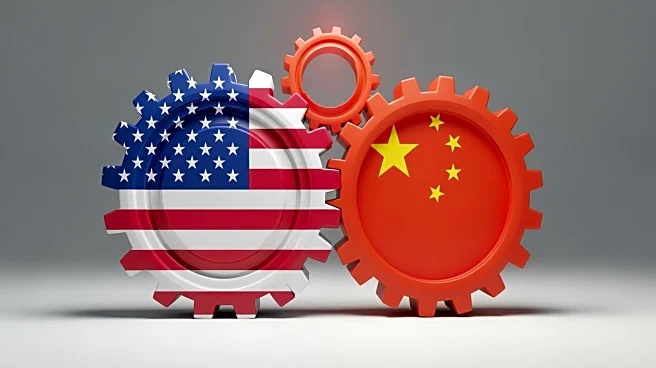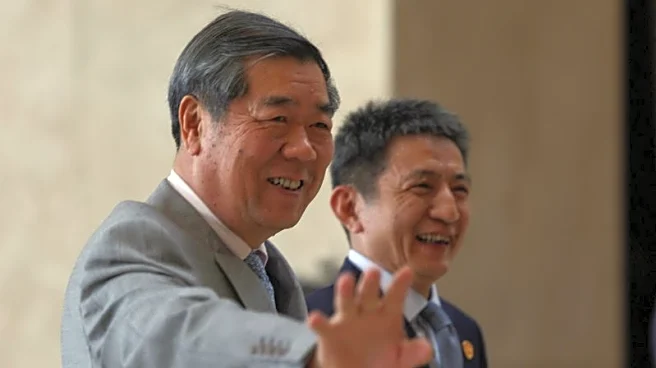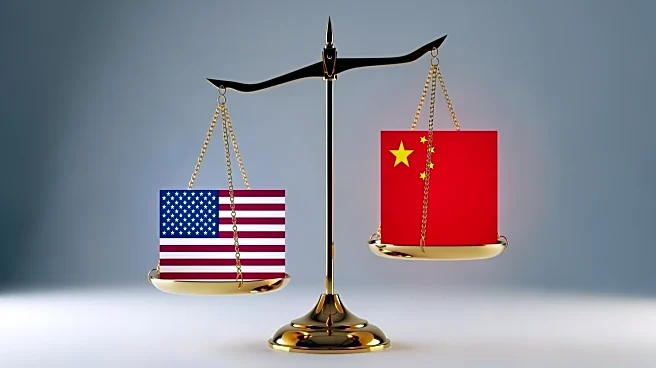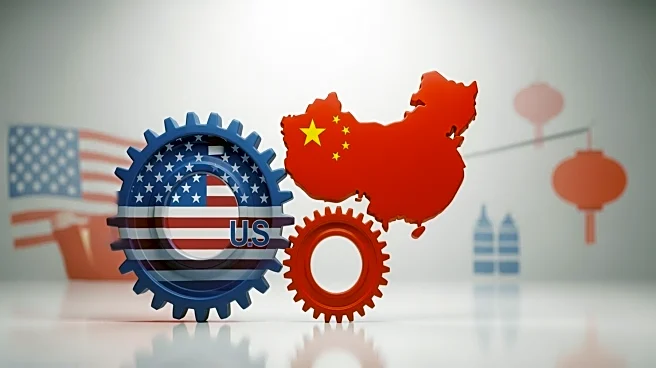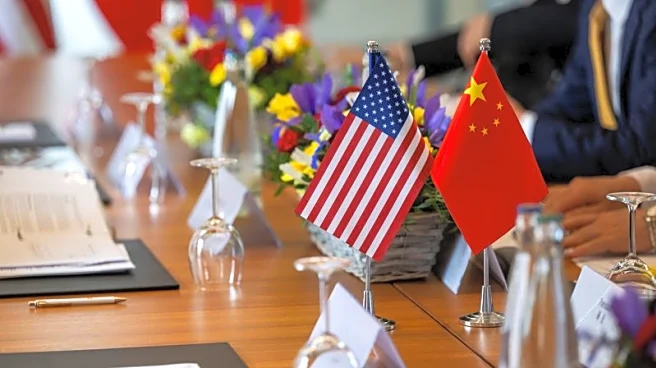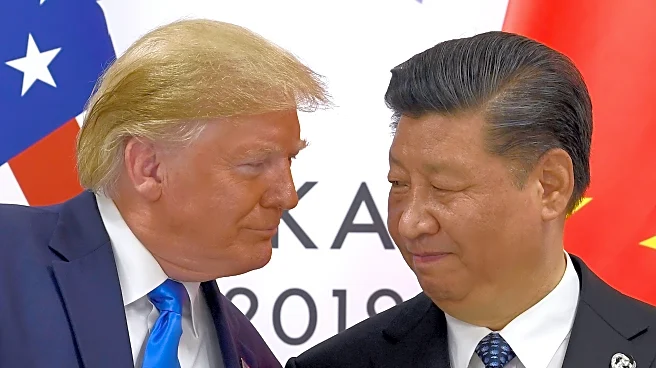What's Happening?
Treasury Secretary Scott Bessent announced that the United States and China are set to significantly de-escalate their ongoing trade war. This development comes as President Trump and Chinese President Xi
Jinping prepare to meet at a regional economic conference in South Korea. Bessent revealed that the threat of a 100% tariff on Chinese goods, previously proposed by President Trump, is now off the table. This decision follows negotiations in Malaysia with Chinese Vice Premier He Lifeng, where discussions also covered American agricultural exports and China's role in curbing the fentanyl trade. The easing of tensions is expected to lead to substantial purchases of U.S. soybeans by China, a move that could alleviate economic pressures on American farmers who have been struggling with falling crop prices.
Why It's Important?
The resolution of trade tensions between the U.S. and China holds significant implications for both countries' economies. For American farmers, particularly those in the soybean industry, this development could provide much-needed relief from economic hardships caused by the trade war. The potential increase in soybean exports to China, traditionally a major market, could stabilize prices and improve the financial outlook for rural America. Additionally, the avoidance of a 100% tariff averts further escalation in trade barriers, which could have had broader negative impacts on global trade and economic stability. The agreement also suggests a potential thaw in U.S.-China relations, which could lead to more cooperative engagements in other areas of mutual interest.
What's Next?
As President Trump and President Xi Jinping meet to finalize the details of the trade agreement, stakeholders will be closely monitoring the outcomes. The agricultural sector, in particular, will be keen to see the specifics of China's commitments to purchasing U.S. soybeans. Additionally, the broader business community will be watching for any changes in export controls, especially concerning rare earths and technology products. The meeting could set the stage for further negotiations on other contentious issues, potentially leading to a more comprehensive trade agreement in the future.



